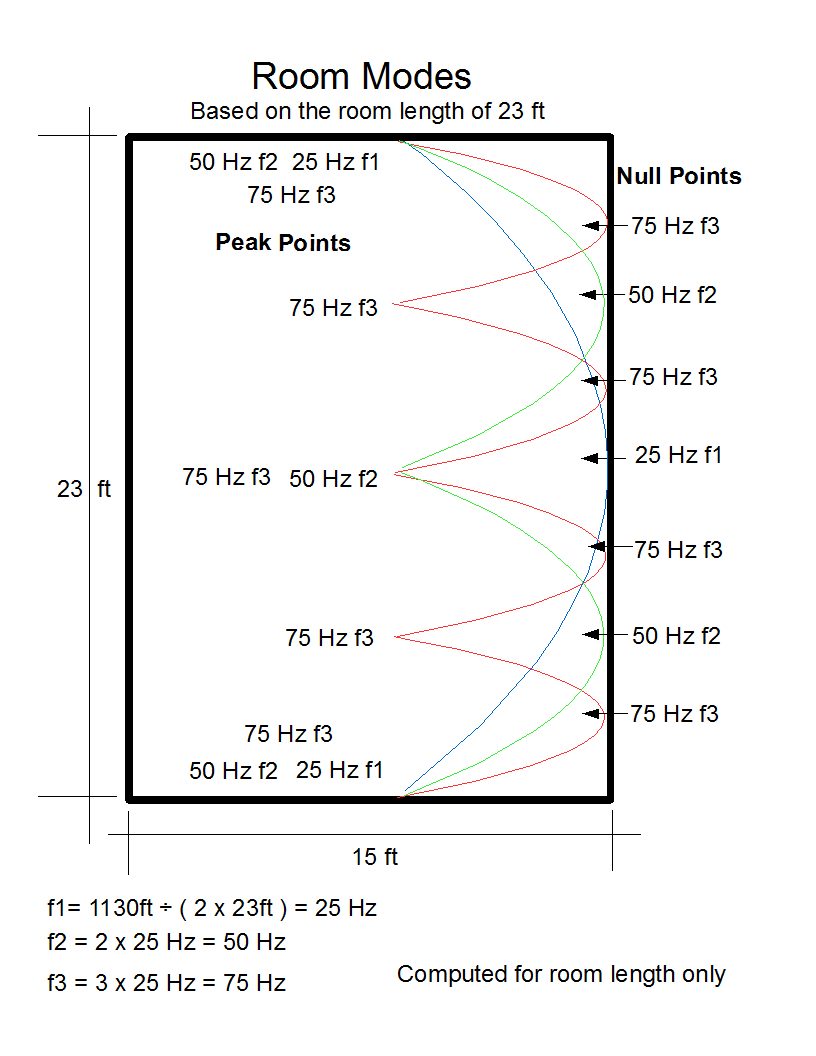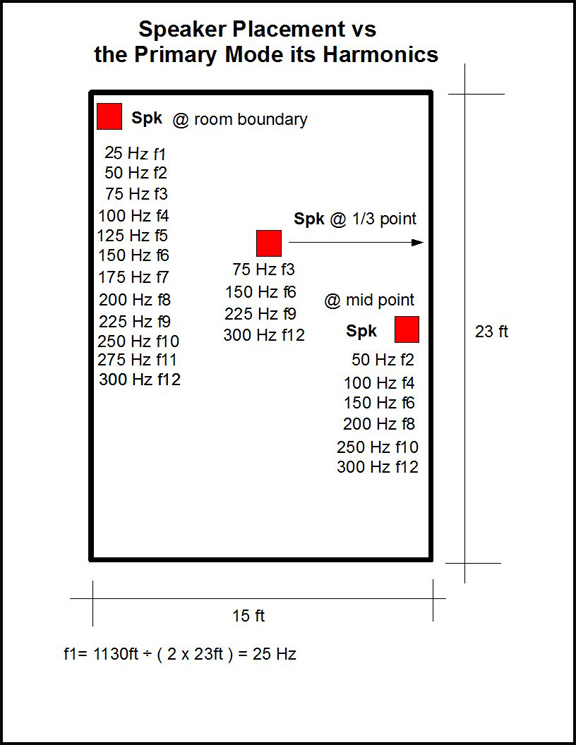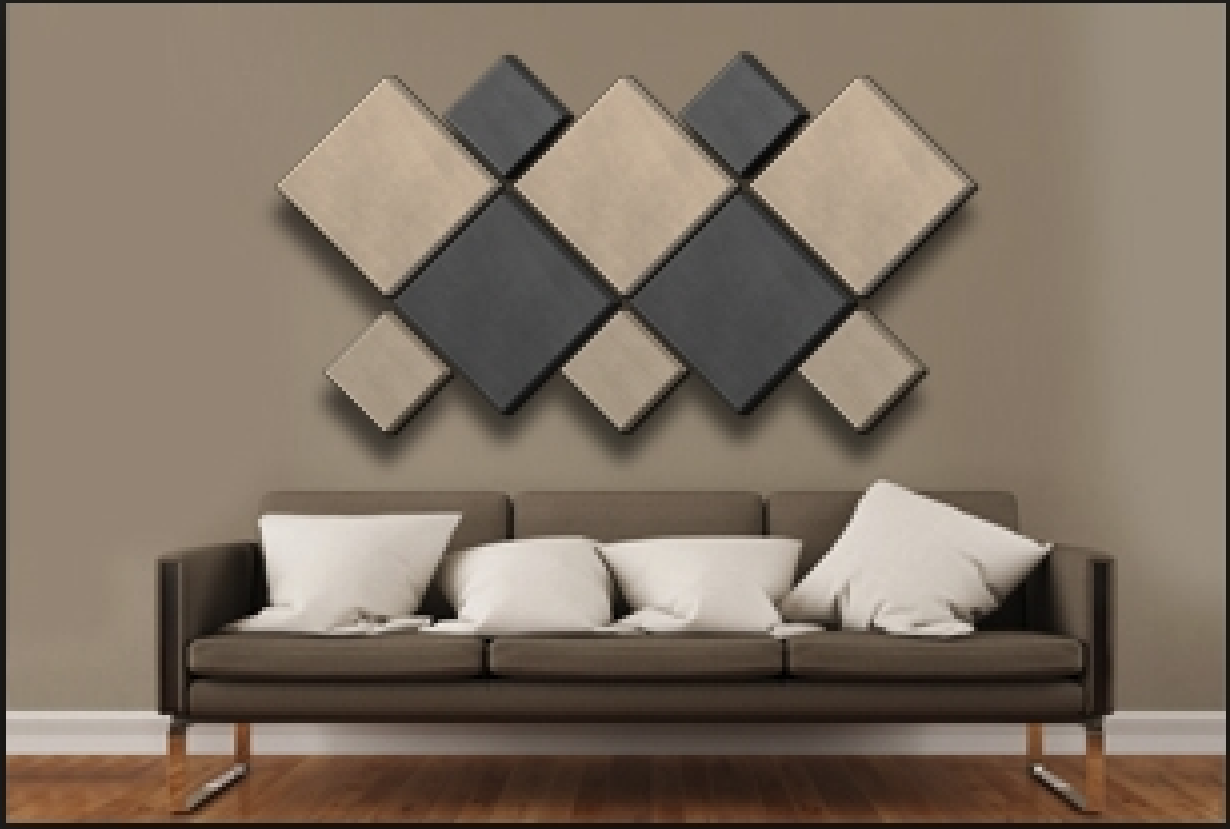Ed's
AV Handbook
Batting practice for the AV Professional
and primer for the novice
Chapter 6 Page 2
The Room, Speaker, & TV
The Room
Your room can morph into a
discordant instrument playing along with your music and movie
soundtracks. Also, you room my grant access to an
uninvited noisy guest. Tame the unwanted effects of your
potential disruptive instrument and uninvited guest with a
practical selection of room construction and configuration
choices. Choices include room dimensions, room-mode
management, the absorption and diffusion of reflected sound,
speaker and listener placement, plus the suppression of noise
from adjoining areas and within the room.
Room Dimensions
Each dimension of a room creates
deviations in an audio system's low-frequency response.
Like the pipe of a pipe organ, each room dimension generates
resonating waves of sound. The resonating waves, defined
as standing waves or room modes, distort audio.
Select from many recommended ratios of room height, width, and length that minimize room mode distortion. Here are several such sets of room dimension ratios from the 'Handbook of Sound Engineers'.
Select from many recommended ratios of room height, width, and length that minimize room mode distortion. Here are several such sets of room dimension ratios from the 'Handbook of Sound Engineers'.
1 :
1.14 :
1.39 1
: 1.4 :
1.9 1 :
1.28 :
1.54
1 : 1.30 :
1.90 1
: 1.5 :
2.5 1 : 1.60 :
2.33*
*Golden
ratio per George Cardas
The ratios are guidelines.
Do not panic if you cannot accommodate a recommended
ratio. Potential distorting room modes still exist with
any residential room. The proposed ratios minimize the
issue.
Room modes and their harmonics
The primary room mode or 1st
resonant frequency of each dimension equals the speed of sound
(1130ft/sec) divided by twice the room dimension. Each
primary-mode produces a series of harmonics. Each is a
multiple of the primary mode (2x 3x, 4x, 5x, etc.x the primary
mode). Each harmonic is successively lower in amplitude.
Primary room-modes and their harmonics produce acoustical peaks and nulls, acoustical swells, throughout the room.
For example;
The primary mode F1 peaks at its opposite boundaries but nulls at the mid-point of the room dimension.
F2 is the 1st harmonic. F2 peaks at each boundary and at the mid-point of the dimension.
But F2 nulls at the mid-point between each peak.
F3 is the 2nd harmonic. F3 peaks at each boundary, the middle point, the 1/4 point, 3/4 point.
And F3 nulls at the mid-point between each peak.
This peak/null pattern continues through F4, F5, F6, F7, etc.
Primary room-modes and their harmonics produce acoustical peaks and nulls, acoustical swells, throughout the room.
For example;
The primary mode F1 peaks at its opposite boundaries but nulls at the mid-point of the room dimension.
F2 is the 1st harmonic. F2 peaks at each boundary and at the mid-point of the dimension.
But F2 nulls at the mid-point between each peak.
F3 is the 2nd harmonic. F3 peaks at each boundary, the middle point, the 1/4 point, 3/4 point.
And F3 nulls at the mid-point between each peak.
This peak/null pattern continues through F4, F5, F6, F7, etc.

Room Modes & Speaker Placement
A speaker placed at a room
boundary excites the first mode and its harmonic series.
-- Position the speaker at the middle of the dimension:
and only the even numbered harmonics are stimulated.
-- Position the speaker at a third of the dimension;
and only the third, sixth, ninth, and so on are stimulated.
-- Position the speaker at a quarter of the dimension:
and only the fourth, eighth, twelfth, and so on.
-- Position the speaker at the middle of the dimension:
and only the even numbered harmonics are stimulated.
-- Position the speaker at a third of the dimension;
and only the third, sixth, ninth, and so on are stimulated.
-- Position the speaker at a quarter of the dimension:
and only the fourth, eighth, twelfth, and so on.
-- And this pattern continues.

Given these facts, we can
conclude that speaker placement has the potential to manage
the room modes of almost any room.
This will be discussed in more detail later in this Handbook chapter.
This will be discussed in more detail later in this Handbook chapter.
Ed's AV Handbook
Copyright 2007 Txu1-598-288 Revised 2025
Sponsored By

Architectural Speaker Tuning System
for
in-wall/ceiling custom installed speakers.
Reclaim
The Performance You Paid For
Site Menu
Home
Table of
Contents
Handbook Chapters
1 AV
Terms
2 AV Physics
3 Sound Reproduction
4 Video Reproduction
5 The AV System Sequence
6 The Room, Speaker, & TV
7 Acoustical Strategy - Small Room
8 Home Theater by Design
9 AV Sales Training
10 AV Business & Marketing
Contact
About
